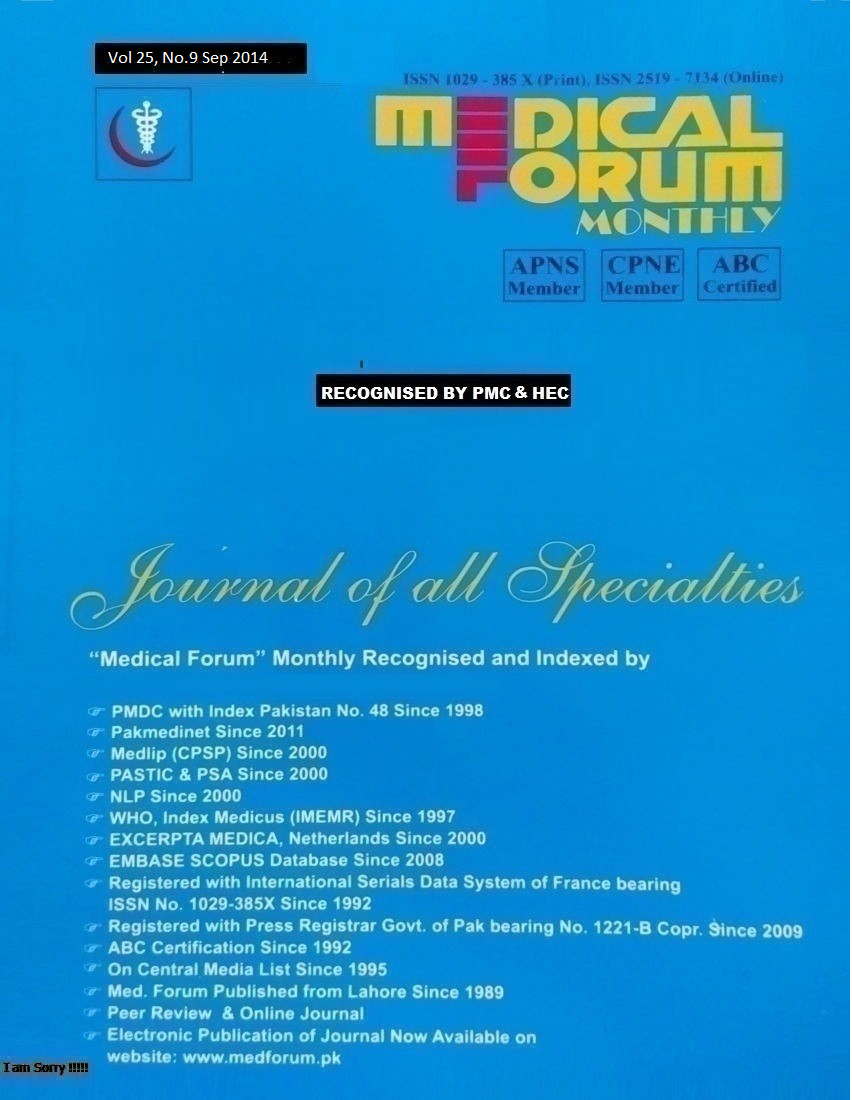
7. Comparison Between Extraoral and Intraoral Surgical Procedures for the Treatment of Mandibular Angle Fractures Using Semirigid Fixation or Rigid Fixation
1. Zaib un Nisa 2. Qadeer ul Hassan 3. Syed Ghazanfar Hassan 4. Salman Shams
5. Muhammad Sibghat Ullah Khan
1. Asstt. Prof. of Periodontology, 2. Asstt. Prof. of Oral & Maxillofacial Surgery 3. Assoc. Prof. of Oral &
Maxillofacial Surgery, 4,5. M.Sc. Trainees, Dept. of Oral & Maxillofacial Surgery, Liaquat University of Medical & Health Sciences Jamshoro
ABSTRACT
Objective: The purpose of this study was to determine various post operative complications associated with two surgical procedures used for reduction of mandibular angle fractures.
Study Design: Experimental study.
Place & Duration of Study: The study was conducted in Department of Oral & Maxillofacial Surgery Liaquat University Hospital Hyderabad from February 2012 to February 2013.
 Materials and Methods: Thirty patients with mandibular fractures were divided in to two categories. Fifteen patients were treated by intra oral approach (Group A) and Fifteen by extra oral approach (Group B). At different intervals of their post operative visits, these patients were evaluated for post operative complications of infection, nerve damage, keloid scar, facial cosmetic dissatisfaction, malocclusion and limitation in mouth opening.
Materials and Methods: Thirty patients with mandibular fractures were divided in to two categories. Fifteen patients were treated by intra oral approach (Group A) and Fifteen by extra oral approach (Group B). At different intervals of their post operative visits, these patients were evaluated for post operative complications of infection, nerve damage, keloid scar, facial cosmetic dissatisfaction, malocclusion and limitation in mouth opening.
Results: 23 male patients and 07 female patients were affected with mandibular fracture. Most common etiology was RTA in 66.6% case. Most common complication with intraoral approach was postoperative infection while facial dissatisfaction was most commonly noticed with extraoral approach.
Conclusion: The intra oral approach with rigid fixation is our effective and superior technique as compare to the extra oral approach.
Key Words: Mandibular angle fracture, Intra/Extra Oral approach, Semirigid fixation or rigid fixation Postoperative
complications
